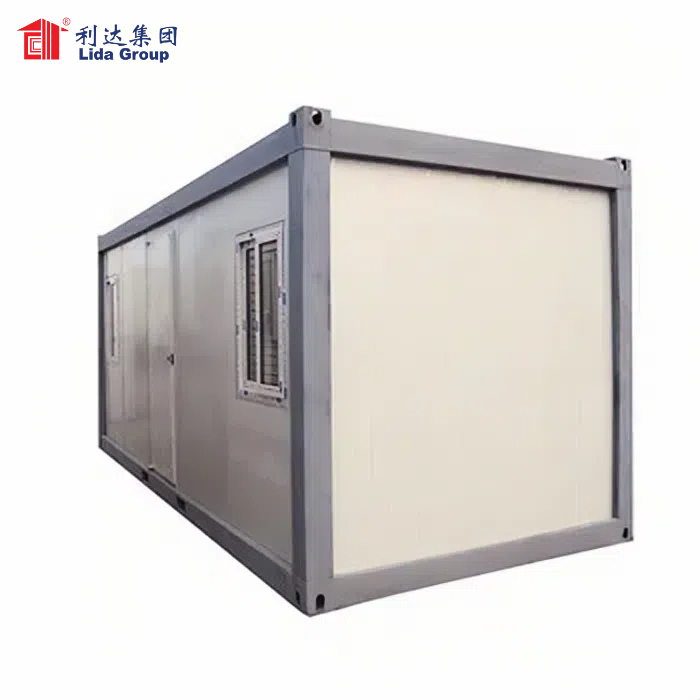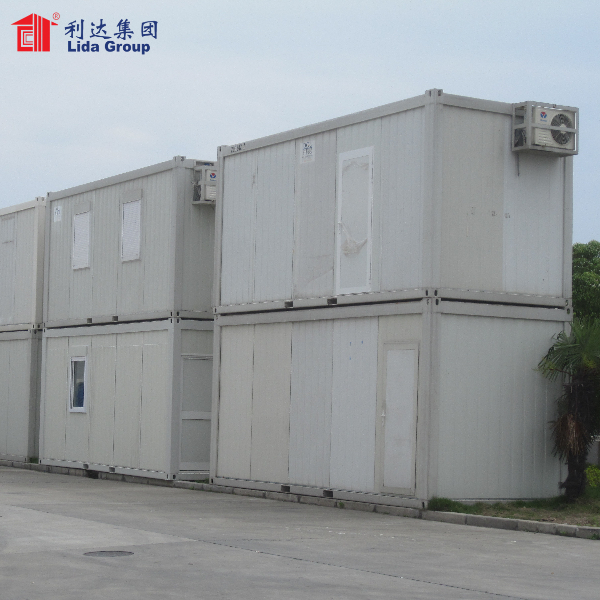Introduction
In an age where housing affordability, sustainability, and rapid deployment are paramount, flat pack container houses have emerged as a revolutionary solution. These innovative structures combine the benefits of traditional housing with the efficiency of modern design and construction methods. This article explores the concept of flat pack container houses, their advantages, applications, and the future of smart living solutions.
Understanding Flat Pack Container Houses
1. What Are Flat Pack Container Houses?
Flat pack container houses are prefabricated structures made from shipping containers that can be easily assembled on-site. Unlike traditional shipping containers, which are delivered as full units, flat pack designs arrive in parts, allowing for more compact transportation and quicker assembly. This modular approach makes them suitable for a wide range of applications, from temporary shelters to permanent residences.
2. The Evolution of Container Housing
The use of shipping containers for housing began as a creative solution to global housing shortages. Over time, this concept evolved into flat pack designs that enhance mobility, cost-effectiveness, and ease of assembly. The rise of sustainable living practices has further propelled the popularity of flat pack container houses, as they offer an eco-friendly alternative to traditional construction methods.
The Advantages of Flat Pack Container Houses
1. Affordability
One of the most attractive aspects of flat pack container houses is their affordability. They provide a cost-effective solution for housing without compromising on quality. Key factors contributing to their affordability include:
- Reduced Material Costs: Utilizing recycled shipping containers minimizes the need for new building materials.
- Lower Labor Costs: The modular design allows for quicker assembly, reducing labor costs significantly.
- Minimal Site Preparation: Flat pack houses often require less groundwork compared to traditional homes.
2. Speed of Construction
The speed at which flat pack container houses can be assembled is unparalleled. With parts manufactured off-site, the construction process can be completed in a fraction of the time it takes to build a traditional home. This rapid deployment is crucial in emergency situations or for projects requiring quick turnaround times.
3. Customizability
Flat pack container houses offer a variety of customization options, allowing homeowners to tailor their living spaces to their specific needs. Customization can include:
- Size and Layout: Clients can choose from different sizes and configurations, ensuring the house fits their needs.
- Interior Finishes: Options for flooring, wall finishes, and fixtures provide a personal touch.
- Functional Additions: Incorporating features like kitchens, bathrooms, and energy-efficient systems enhances livability.
4. Sustainability
Flat pack container houses promote sustainable living in several ways:
- Recycling: Repurposing shipping containers reduces waste and promotes recycling.
- Energy Efficiency: Many designs incorporate sustainable materials and energy-efficient systems, such as solar panels and green insulation.
- Reduced Carbon Footprint: The smaller environmental impact of using pre-existing materials and shorter construction times contributes to a lower carbon footprint.
Applications of Flat Pack Container Houses
1. Emergency Housing Solutions
Flat pack container houses are increasingly being used in disaster relief efforts. Their ability to be rapidly deployed makes them ideal for providing shelter in the aftermath of natural disasters, such as hurricanes, earthquakes, or floods. Organizations like the United Nations and various NGOs have utilized these structures to offer immediate housing solutions.
2. Affordable Housing Initiatives
As urban populations grow, the need for affordable housing becomes more critical. Flat pack container houses can be integrated into urban development projects, providing sustainable living options for low-income families. Governments and developers are exploring this innovative solution to address housing shortages in cities around the world.
3. Eco-Tourism and Hospitality
The hospitality industry has begun to embrace flat pack container houses as unique lodging options. Eco-friendly resorts and hotels are utilizing these structures to create charming, sustainable accommodations that offer travelers a distinctive experience. The modular design allows for creative layouts and scenic placements, enhancing the appeal of eco-tourism.
4. Student Housing
With rising student populations and increasing demand for affordable accommodations, flat pack container houses provide a viable solution for universities and colleges. By converting underutilized land into container housing, educational institutions can offer affordable living options for students, fostering a sense of community and enhancing the overall college experience.
5. Remote Workforce Housing
In industries where remote workers are essential, such as mining or oil extraction, flat pack container houses can serve as on-site accommodations. These structures can be easily transported to remote locations and configured to provide comfortable living spaces for employees, ensuring they have a safe and secure place to live while working away from home.
The Design and Construction Process
1. Prefabrication
The construction of flat pack container houses begins with the prefabrication of components in a controlled factory environment. This process ensures high-quality standards and reduces construction waste. Key elements of prefabrication include:
- Fabrication of Panels: Walls, floors, and roofs are manufactured as panels that can be easily assembled on-site.
- Integration of Utilities: Electrical and plumbing systems can be pre-installed in the factory, simplifying the assembly process.
2. Transportation
Once the components are fabricated, they are transported to the construction site. The flat pack design allows for efficient transportation, as multiple units can be shipped together in a compact form. This minimizes transportation costs and reduces the carbon footprint associated with logistics.
3. On-Site Assembly
The assembly of flat pack container houses typically involves the following steps:
- Foundation Preparation: A simple foundation or platform is prepared to support the structure.
- Panel Assembly: Panels are assembled and secured, creating the main structure of the house.
- Utility Connections: Electrical, plumbing, and HVAC systems are connected, ensuring the house is fully functional.
- Finishing Touches: Interior finishes, fixtures, and landscaping are completed to create a livable space.
Challenges and Considerations
1. Regulatory Hurdles
Navigating local building codes and zoning regulations can pose challenges for flat pack container house projects. It is essential for developers and homeowners to work closely with local authorities to ensure compliance with all regulations, which can vary significantly by location.
2. Public Perception
Some individuals may have preconceived notions about the aesthetics or functionality of container houses. Addressing these perceptions through innovative design and high-quality finishes is crucial for promoting acceptance of flat pack container houses as viable living options.
3. Initial Investment
While flat pack container houses are generally more affordable than traditional homes, the initial investment can still be a concern for some buyers. Clear communication of the long-term benefits, including lower utility costs and maintenance, is essential in demonstrating the value of this housing solution.
Future Trends in Flat Pack Container Housing
1. Technological Innovations
As technology continues to advance, the future of flat pack container houses will likely see the integration of smart home features. Home automation systems, energy-efficient appliances, and sustainable technologies will enhance the livability and efficiency of these structures.
2. Increased Focus on Community Living
The trend toward community-oriented living is expected to grow, with more developers exploring flat pack container houses as a means of creating vibrant, interconnected neighborhoods. These communities can promote social interaction and support among residents, fostering a sense of belonging.
3. Global Expansion
The demand for flat pack container houses is not limited to specific regions; their appeal is global. As countries face housing shortages, economic challenges, and environmental concerns, the adoption of flat pack container houses is likely to expand, providing solutions to diverse communities worldwide.
4. Sustainable Practices
As sustainability becomes increasingly important in construction, flat pack container houses will likely incorporate even more eco-friendly practices. Innovations in materials, energy sources, and waste reduction will continue to enhance the environmental benefits of these structures.
Conclusion
Flat pack container houses represent a transformative approach to housing that combines affordability, speed, sustainability, and customization. As the world grapples with housing challenges, these innovative structures offer practical solutions for various applications, from emergency housing to permanent residences.
The growing acceptance of flat pack container houses reflects a shift in how we think about living spaces. By embracing smart living solutions, individuals and communities can access quality housing that meets their needs while contributing to a more sustainable future. As we look ahead, flat pack container houses are poised to play a vital role in shaping the landscape of modern living, making them an appealing option for everyone.
Contact Us
Post time: Sep-13-2024


